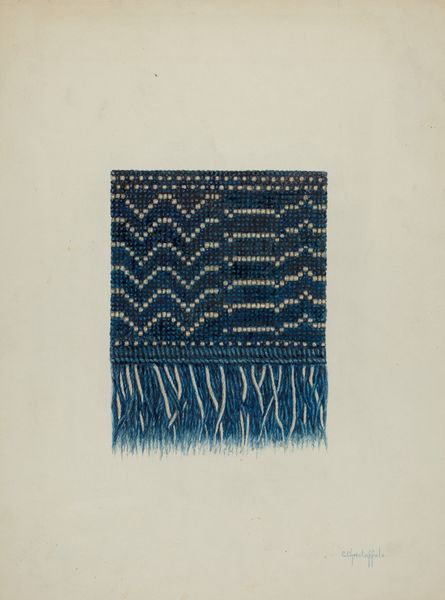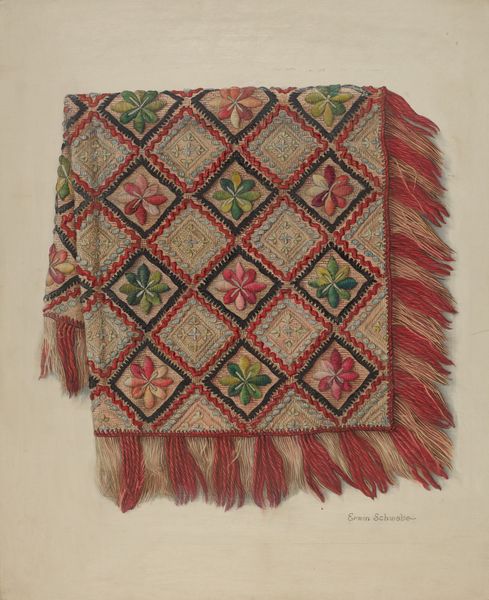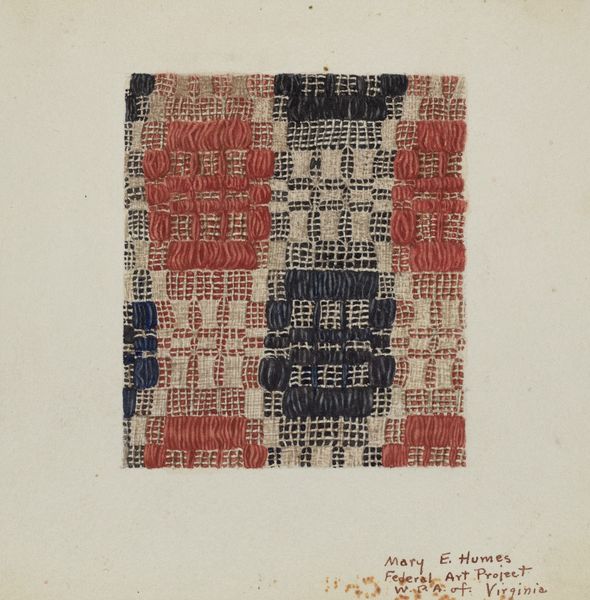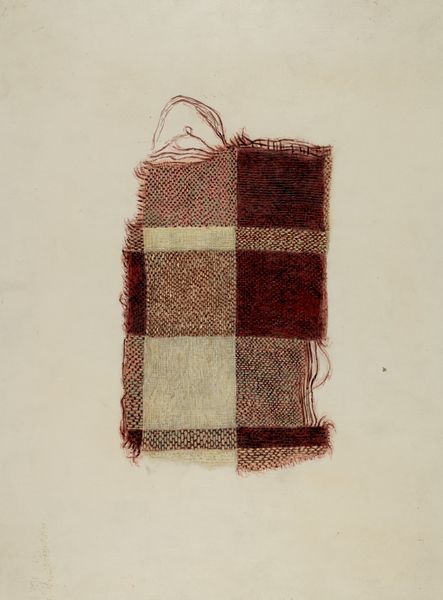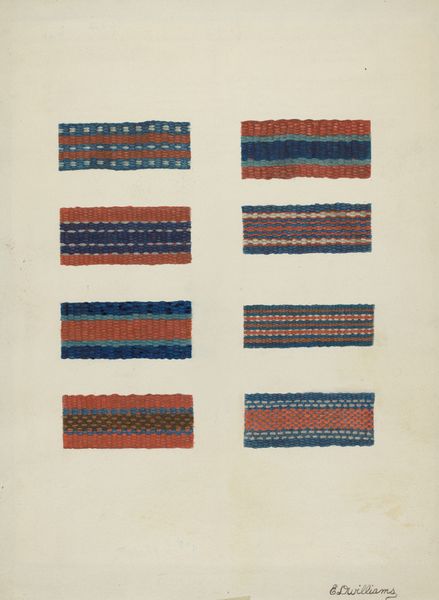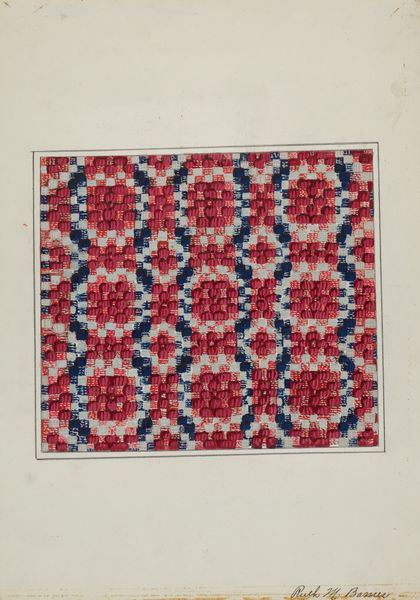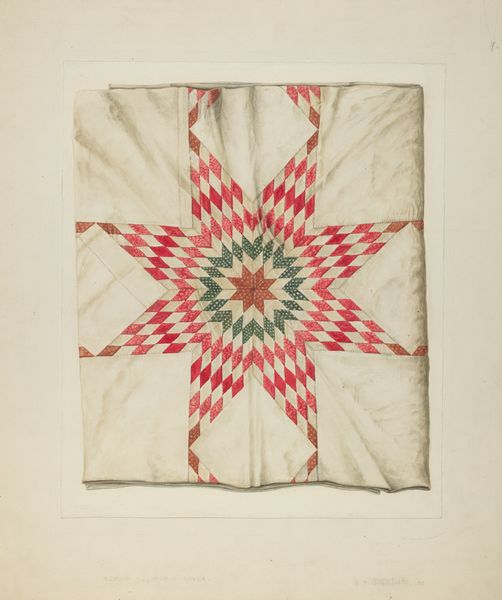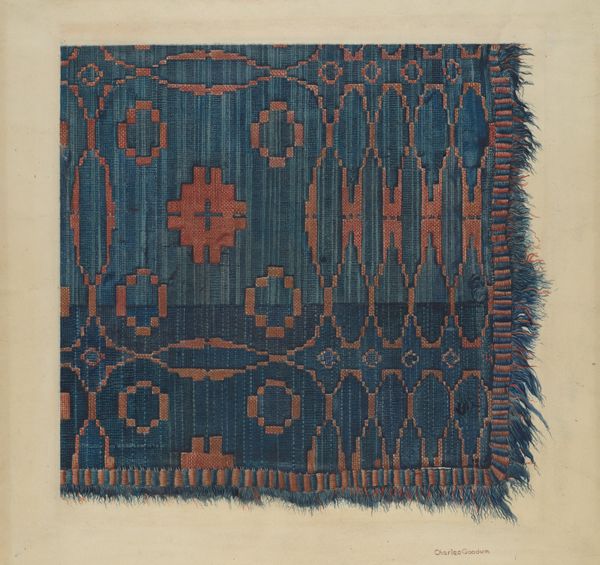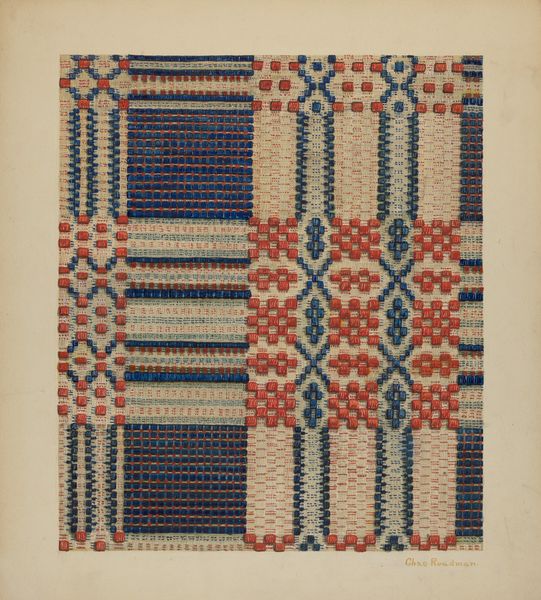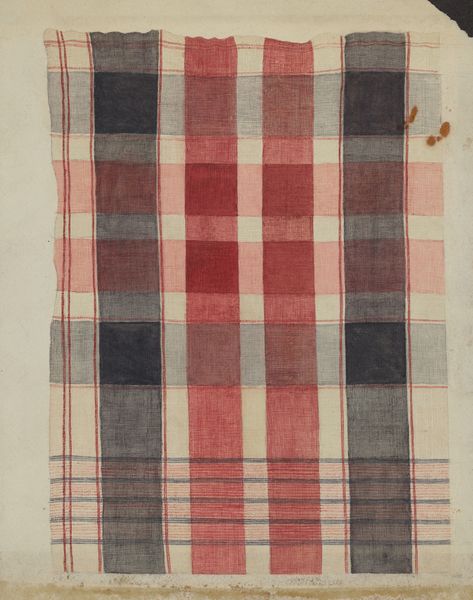
drawing, graphic-art, print, textile, paper
#
drawing
#
graphic-art
#
water colours
# print
#
textile
#
paper
#
decorative-art
#
watercolor
Dimensions: overall: 54.8 x 45.7 cm (21 9/16 x 18 in.) Original IAD Object: 31" square
Copyright: National Gallery of Art: CC0 1.0
Curator: I find myself drawn to the intricate detailing in "Brocade Kerchief" by Angelo Bulone, likely created around 1938. It is rendered using graphic art techniques—incorporating drawing, printmaking, and textile elements—all presented on paper. Editor: The overall impression is that of an heirloom, a fragment imbued with memory. I sense a melancholic stillness—heightened by the controlled palette of indigo and magenta—almost like a jewel fading beneath layers of fabric. Curator: The graphic qualities are really interesting. It strikes me that while the artwork’s presentation employs a graphic-art approach, the subject matter delves into the production of textiles and craft, asking questions of artistic and economic value, don’t you think? How would such kerchiefs relate to women's labour in that period? Editor: Undoubtedly. And yet, look at the strategic arrangement of the motifs. Those flower-like patterns interspersed with more subdued geometric designs might hold symbolic importance. Perhaps they signify resilience amidst changing circumstances or recall certain moments or ideas deeply etched in collective memory? The Kerchief has so much encoded in its iconography and artistic expression! Curator: It also hints at the intersection of industrial and artisanal production—of designs that might be machine-reproduced on a massive scale. In other words, does the work become more than decorative with Angelo’s signature included on it? The artist seems deeply conscious of materials. Editor: You’re spot on! Beyond any immediate utility as mere clothing, such kerchiefs take on social importance—becomes charged sites of identity and cultural meaning. It invites viewers to reflect upon heritage and remembrance! Curator: And it points us toward re-evaluating design, labor, and class during the late 1930s. It's a commentary on material culture itself. Editor: Quite fascinating how a simple piece, through careful depiction and suggestive composition, invites one to consider grand issues of culture, work, and artistic symbolism. Curator: A complex object of study! Editor: Indeed!
Comments
No comments
Be the first to comment and join the conversation on the ultimate creative platform.

